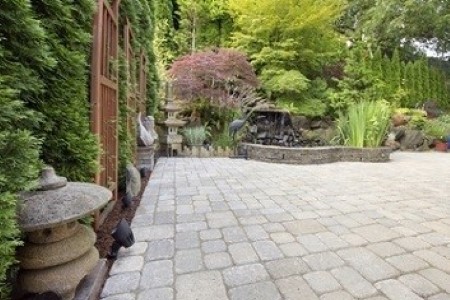Hammond Interlocking Brick Paving - Increase Your Property's Curb Appeal

Among all the technologies and methods currently in vogue for installing a driveway, clearly the superior method is the installation of Hammond interlocking brick pavers. The amazing range of color and laying patterns, complete with the uber-creative designs of the pavers themselves, insist that it is at least viable, just from the design sense. But there are other factors to consider which are at least as important, if not much, much more so.
The bottom line is that interlocking brick paving has become a standard which has set the bar high indeed in terms of adding real value to a home. There are very few similar improvement tactics on the outside of a home which add curb appeal and real, true intrinsic value to a home. Whereas landscaping seems to be a great addition, it is a very subjective opinion, depending on who is assessing its appeal. Brick paving, on the other hand, is a universally-appreciated aspect of a home's value.
Durability
Interlocking bricks come in a wide variety of shapes and sizes, but by far their primary strictly functional appeal is in their durability. As gorgeous as they are, they are also amazingly strong. Manufacturing these bricks reveals the utmost in modern concrete technology. The installation of additional cement in the forming process yields one more element of a stronger paving product.
What takes it further into the realm of durability is the process of using finer silicate sands for the cement structural medium plus a process whereby the forming machine not only compresses the block, but also shakes it to void any possible air pockets, a typical cement weakness. Thus, the three elements of finer silicates, more cement and voiding any possible flaws inside imply an amazingly hard structural product.
Interlocking bricks manufactured in this way thus produce a product with a PSI (pounds per square inch) rating ranging up to 8,500 PSI. When you consider that your average sidewalk has a PSI rating of 3,500 PSI, and curbs and gutters made to withstand pressures of weather and traffic rate at about 4,500 PSI, the picture becomes clearer as to why many cities are opting for the greater initial outlay of installation so they can realize the absolute relative dearth of maintenance issues later.
Modularity and Long Term Maintenance
There are abundant more advantages to using this cool and amazingly durable product, one of them being its modularity. Interlocking brick pavers can be lifted out individually to replace somehow defective, worn or damaged pieces. If a damaging event occurs, the replacement process involves a guy with a couple of screwdrivers or a lifting tool, disposing of the damaged pieces and inserting new ones, colorfast and as good as the original.
Flexibility and Cracks
Another advantage yet is how a flexible surface such as interlocking brick pavers can be, as opposed to cement or asphalt. You see, in severe climates, the hard frosts of winter reach below the surface of the base material and cause ground to “heaveâ€. Pockets of retained water freeze and thus expand, forcing the land to literally “bendâ€, thereby breaking and cracking concrete which is far less flexible than its other competitor in Hammond paving, asphalt. As it happens, asphalt itself will also break under heaving conditions.

